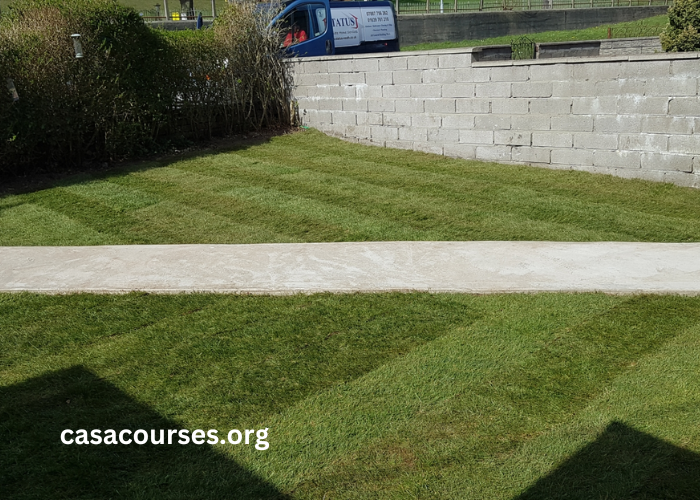Turf betting, or horse race betting, is a dynamic and thrilling activity that has captivated enthusiasts for generations. Amid the myriad of betting strategies, “Stato Turf” has emerged as a notable method that leverages statistical analysis and data-driven insights to predict race outcomes. This comprehensive guide explores the principles, benefits, and application of Stato Turf, offering valuable insights for both novice and experienced bettors. By understanding and utilizing Stato Turf, you can enhance your betting strategy and increase your chances of success in the competitive world of turf betting.
What is Stato Turf?
Stato Turf is a betting strategy that emphasizes the use of statistical data and analysis to make informed predictions about horse race outcomes. Unlike traditional betting methods that might rely heavily on intuition or insider tips, Stato Turf focuses on empirical evidence, leveraging historical performance data, statistical models, and probability theories. This approach aims to provide bettors with a more scientific and reliable basis for their betting decisions, ultimately increasing their chances of making profitable bets.
History and Evolution of Stato Turf
The concept of Stato Turf has evolved alongside advancements in data analytics and technology. Initially, horse racing bettors relied primarily on basic performance records and personal insights. However, as statistical methods became more sophisticated and accessible, the betting community began to adopt these tools to improve prediction accuracy. Today, Stato Turf represents a fusion of traditional betting knowledge and modern statistical techniques, reflecting the ongoing evolution of the turf betting landscape.
Key Principles of Stato Turf
The effectiveness of Stato Turf is rooted in several key principles:
- Data Collection: Gathering comprehensive data on horses, jockeys, trainers, and race conditions.
- Statistical Analysis: Using statistical models to analyze past performance and predict future outcomes.
- Probability Assessment: Estimating the likelihood of various outcomes based on data-driven insights.
- Continuous Refinement: Updating and refining models with new data to enhance prediction accuracy.
These principles guide bettors in making well-informed and strategic decisions, setting Stato Turf apart from more subjective betting approaches.
Data Collection in Stato Turf
Data collection is the cornerstone of Stato Turf. Bettors must gather extensive data on various aspects of horse racing, including:
- Horse Performance: Past race results, speed figures, and fitness levels.
- Jockey Statistics: Win rates, riding styles, and performance under different conditions.
- Trainer Records: Success rates, training methods, and history with specific horses.
- Track Conditions: Type of surface, weather conditions, and their impact on performance.
By compiling and analyzing this data, bettors can identify patterns and trends that inform their predictions.
Statistical Analysis Techniques
Stato Turf relies on various statistical analysis techniques to process and interpret the collected data. Common methods include:
- Regression Analysis: Identifying relationships between variables and predicting future performance based on past data.
- Machine Learning Algorithms: Using AI to detect complex patterns and improve prediction accuracy.
- Monte Carlo Simulations: Running numerous simulations to estimate the probability of different outcomes.
- Descriptive Statistics: Summarizing data to identify key trends and insights.
These techniques enable bettors to develop robust models that enhance their betting strategies.
Probability Assessment in Stato Turf
Probability assessment is a crucial component of Stato Turf. By estimating the likelihood of different race outcomes, bettors can make more strategic and confident bets. This involves calculating the odds of each horse winning or placing based on statistical models and historical data. Probability assessment helps bettors identify value bets—situations where the odds offered by bookmakers are higher than the calculated probability, offering a potential edge.
Implementing Stato Turf Strategies
To implement Stato Turf strategies effectively, bettors should:
- Collect Data: Gather and organize comprehensive data on all relevant aspects of horse racing.
- Analyze Data: Use statistical methods to analyze the data and develop predictive models.
- Assess Probabilities: Estimate the likelihood of various outcomes based on the models.
- Place Strategic Bets: Make informed betting decisions based on the probability assessments.
This systematic approach helps bettors maximize their chances of success and minimize risks.
Benefits of Using Stato Turf
Stato Turf offers several advantages:
- Enhanced Accuracy: Data-driven predictions are generally more accurate than intuition-based decisions.
- Informed Decision-Making: Comprehensive analysis provides a solid foundation for betting choices.
- Reduced Risk: Statistical models help identify value bets and minimize the risk of significant losses.
- Long-Term Success: A disciplined, data-driven approach increases the likelihood of sustained success.
These benefits make Stato Turf an appealing option for serious bettors looking to improve their performance.
Challenges and Limitations
Despite its advantages, Stato Turf also presents challenges:
- Data Overload: Managing and analyzing large volumes of data can be overwhelming.
- Complexity: The statistical techniques involved require a solid understanding of mathematics and data science.
- Market Dynamics: Betting markets are influenced by numerous unpredictable factors, adding complexity to predictions.
- Continuous Adaptation: Models need to be regularly updated with new data to maintain their accuracy.
Recognizing and addressing these challenges is crucial for effectively using Stato Turf.
Case Studies and Success Stories
Numerous bettors have achieved remarkable success using Stato Turf. For example, some have consistently identified undervalued horses by applying advanced statistical models, leading to significant winnings. These case studies highlight the potential of Stato Turf when applied diligently and strategically. By learning from these success stories, other bettors can refine their approaches and improve their own betting outcomes.
Tools and Resources for Stato Turf
Several tools and resources can assist bettors in implementing Stato Turf:
- Data Platforms: Websites and databases that provide detailed race data and statistics.
- Analytical Software: Tools for performing statistical analysis and building predictive models.
- Expert Networks: Communities and forums where bettors can share insights and strategies.
- Educational Resources: Books, courses, and articles on statistical analysis and turf betting.
Utilizing these resources can significantly enhance a bettor’s ability to apply Stato Turf effectively.
Integrating Technology in Stato Turf
Technology plays a pivotal role in Stato Turf. Advanced software, AI algorithms, and real-time data platforms enable more precise analysis and prediction. Mobile applications provide bettors with instant access to data and insights, making it easier to make timely decisions. As technology continues to evolve, Stato Turf will likely become even more sophisticated, offering bettors new tools to enhance their strategies.
The Future of Stato Turf
The future of Stato Turf looks promising, with several trends likely to shape its evolution:
- Artificial Intelligence: Greater use of AI to enhance predictive models and improve accuracy.
- Real-Time Data: Increased access to live data and updates, enabling more timely decisions.
- Personalized Insights: Tailored predictions based on individual betting patterns and preferences.
- Global Adoption: Broader use of Stato Turf strategies by bettors worldwide.
These trends suggest that Stato Turf will continue to evolve, offering even more sophisticated tools and strategies for bettors.
Getting Started with Stato Turf
For those new to Stato Turf, getting started involves:
- Learning the Basics: Understanding the principles of data analysis and statistical modeling.
- Gathering Resources: Accessing data platforms, analytical tools, and expert networks.
- Practicing: Applying Stato Turf strategies on smaller bets to gain experience.
- Staying Updated: Continuously learning and adapting to new data and trends.
Starting small and gradually building your skills can help you effectively implement Stato Turf strategies.
Conclusion
Stato Turf represents a sophisticated and analytical approach to turf betting that combines data collection, statistical analysis, and probability assessment. By understanding and applying the principles of Stato Turf, bettors can enhance their betting strategies and improve their chances of success. While the approach requires diligence, discipline, and the use of advanced tools, the potential rewards make it a valuable strategy for anyone serious about horse race betting. As technology and data analytics continue to advance, Stato Turf will remain a key methodology in the world of turf betting, offering exciting opportunities for bettors worldwide.



